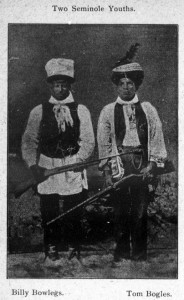Overview
Adapted from Andrew Jackson and the “Children of the Forest” from Zinn Education Project
This lesson is a critique of Andrew Jackson’s 1830 address to Congress. With statements like “a few savage hunters,” Jackson’s address is a perfect example of power exploiting ignorance. Many assumed that because Jackson was president, he must know best. It must be understood that you can—and should—critique, question, and logically judge all proclamations from the government, including the president. Similarly, it’s important to encourage the questioning of textbooks, newspapers, films, and speeches no matter the presenter—maybe even more so if the presenter is a highly powered political figure who may have something to gain from the outcome.
Oregon Common Core State Standards
Language Arts Standards:
- ELA.RH.6-8.1 Cite specific textual evidence to support analysis of primary and secondary sources.
- ELA.RH.6-8.4 Determine the meaning of words and phrases as they are used in a text, including vocabulary specific to domains related to history/social studies.
- ELA.RH.6-8.8 Distinguish among fact, opinion, and reasoned judgment in a text.
- Additional standards listed in PDF Download
Social Studies Standards:
- Historical Knowledge 8.1. Evaluate continuity and change over the course of U.S. history by analyzing examples of conflict, cooperation, and interdependence among groups, societies, or nations.
- Historical Knowledge 8.2. Evaluate continuity and change over the course of U.S. history by analyzing key people and constitutional convention, the age of Jefferson, the Industrial Revolution, the Westward Expansion, and the Civil War.
- Historical Knowledge 8.3. Examine the social, political, and economic factors that caused the Westward Expansion from the American Revolution through Reconstruction.
- Historical Knowledge 8.4. Evaluate the impact of different factors, including gender, age, ethnicity, and class on groups and individuals during this time period and the impact these groups and individuals have on events of the time.
- Historical Thinking 8.6. Use and interpret documents and other relevant primary and secondary sources pertaining to U.S. history from multiple perspectives.
- Historical Thinking 8.7. Analyze evidence from multiple sources, including those with conflicting accounts about specific events in U.S. history.
- Historical Thinking 8.8. Evaluate information from a variety of sources and perspectives.
- Historical Thinking 8.9. Construct or evaluate a written historical argument demonstrating an understanding of primary and secondary sources.
- Geography 8.10. Interpret maps to identify growth and development of the United States.
- Civics and Government 8.14. Explain rights and responsibilities of citizens.
- Civics and Government 8.15. Contrast the impact of Articles of Confederation as a form of government to the U.S. Constitution.
- Civics and Government 8.18. Examine and analyze important U.S. documents, including (but not limited to) the Constitution, Bill of Rights, and 13th through 15th Amendments.
- Civics and Government 8.21. Analyze important political and ethical values such as freedom, democracy, equality, and justice embodied in documents such as the Declaration of Independence, the U.S. Constitution, and the Bill of Rights.
Materials
- Copies of Cherokee and Seminole roles for each student
- Copies of Andrew Jackson’s speech
- Andrew Jackson costume
- Access to the Internet
Key Vocabulary
- A list of key vocabulary and an activity sheet are provided below.
Lesson
- Background information: Give students background knowledge about the Cherokee and Seminole Indian groups.
- History: Some background information about Indian Removal and the Trail of Tears from the Seminole Tribe and Cherokee Nation
- Introduction: Students will play the role of either a Cherokee or Seminole. While they are in these roles, they will think critically about President Jackson’s speech—critique and argue it.
- Research: Give students time to research their parts in order to get a better understanding of who they are representing and/or have the students who played the part in the previous role-play exercise educate the class.
- Additionally, you may want to include other Indian nations—Choctaw, Chickasaw, or Creek—to bring more variety to the role-play and critique.
- Give students time to discuss in their groups. Most important is they should know how to argue that they should not be removed from their land.
- Read aloud: Read President Jackson’s speech in a dramatized manner.
- Question: After reading the speech, give students time to question the president.
- Debrief: Debrief students’ experiences in their role-play.
- Some debrief questions to consider:
- What do you believe about Jackson’s speech? What don’t you believe?
- What is Jackson’s definition of “savage”? Of “civilized”?
- Is it feasible to represent the Cherokee or Seminoles as “a few savage hungers”? Why? Why not? Why would Jackson use this statement?
- What parts of Jackson’s speech need ignorance?
- How do you think black slaves would respond to this speech?
- In what ways did the Indian removal policy affect black slaves?
- What do you think Jackson’s definition of “progress” was?
- Is the comparison “Doubtless it will be painful to leave the graves of their fathers, but what do they do more than our ancestors did or than our children are now doing” fair?
- How does Jackson try to justify that policy “toward the red man is not only liberal, but generous”?
- What does the description “children of the forest” imply about the difference between Indian and white man?
- Critique: Give students time to brainstorm and reflect on the speech.
- Once students are finished brainstorming, have them write out their critique.
- Students may write a response to Jackson’s speech, or even write a letter to the president.
- A good closing could be to read:
“The Indian School at Chemawa” from West Shore, January 1, 1887 (Note: the student newspaper from the Chemawa Indian School, the Weekly Chemawa American (1901-1910)/Chemawa American (1914-1915) are both available for searching and browsing on Historic Oregon Newspapers online.)


Leave a Reply